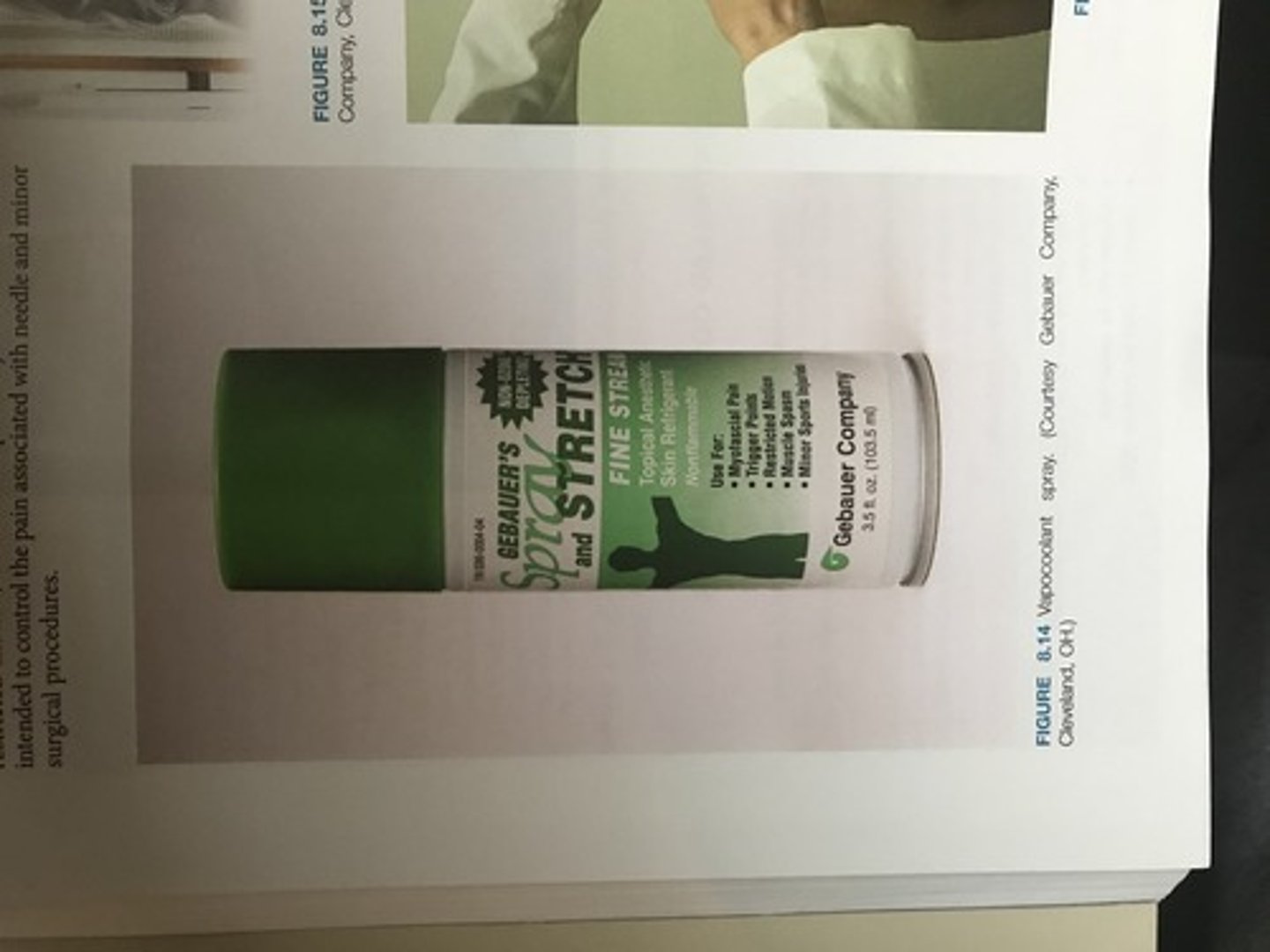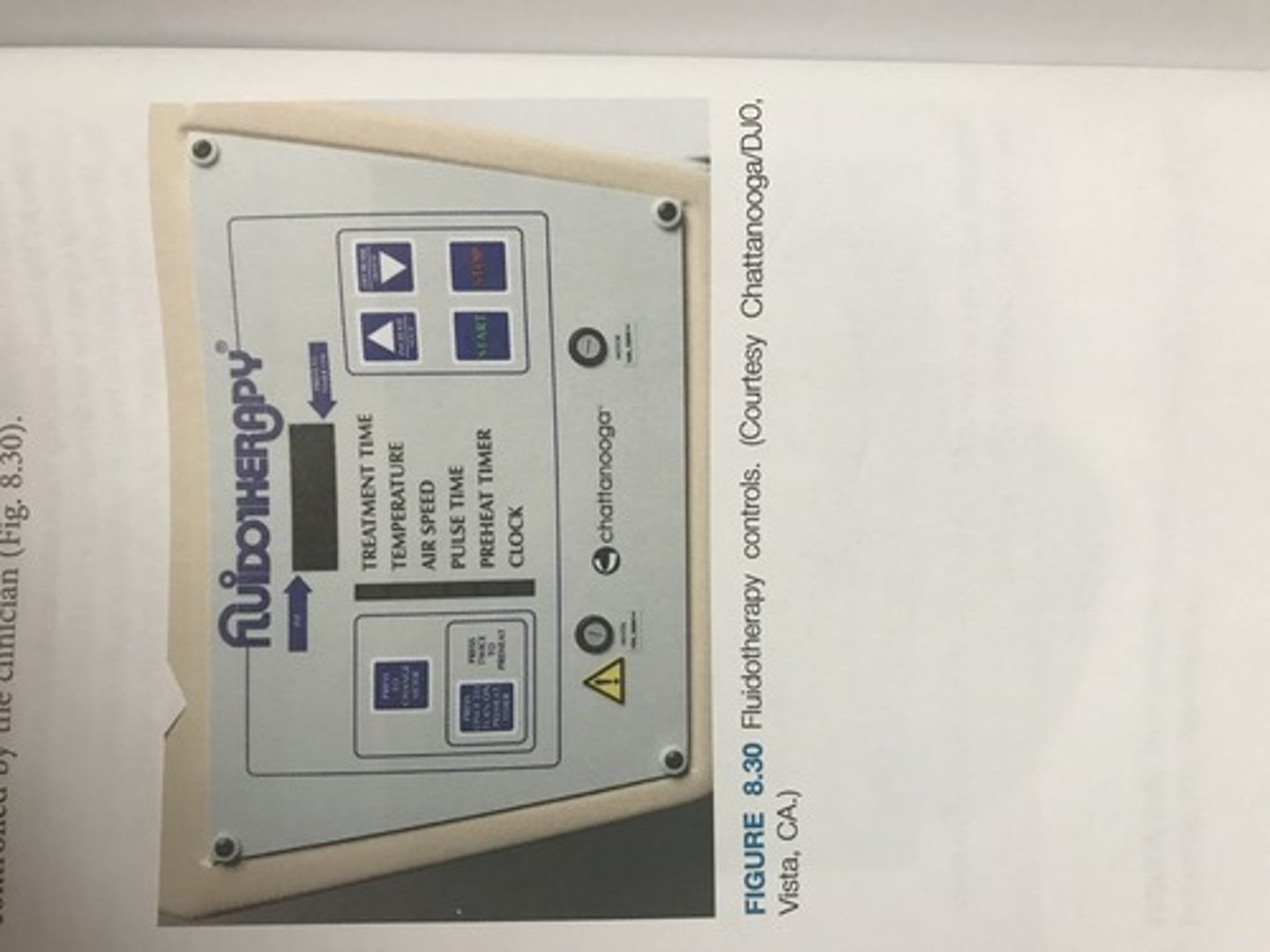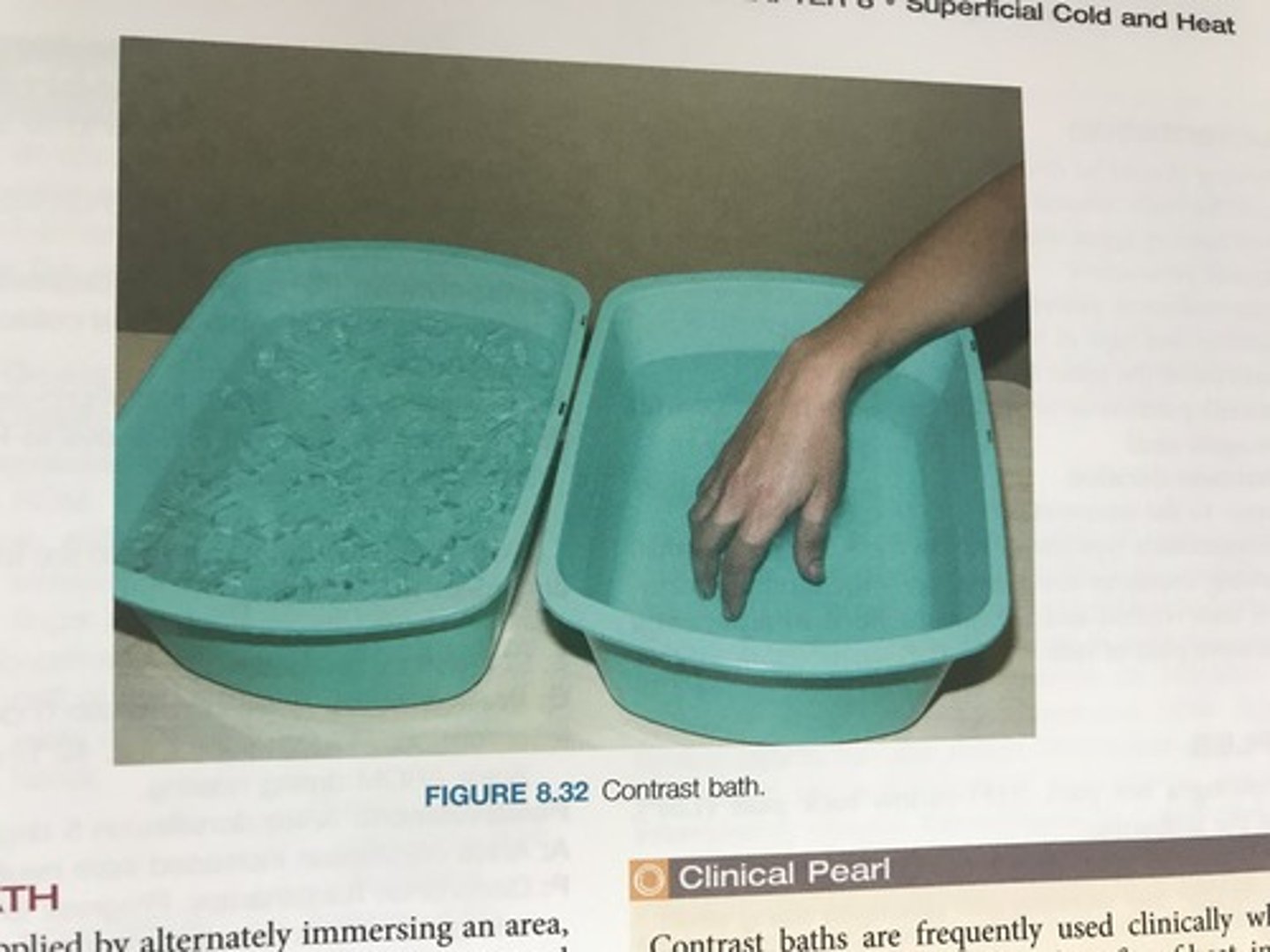Therapeutic Applications of Cryotherapy and Thermotherapy
1/66
There's no tags or description
Looks like no tags are added yet.
Name | Mastery | Learn | Test | Matching | Spaced |
|---|
No study sessions yet.
67 Terms
Cryotherapy
Therapeutic use of cold for treatment.
Thermotherapy
Therapeutic use of heat for treatment.
Vasoconstriction
Narrowing of blood vessels due to cold.
Cold-induced vasodilation (CIVD)
Vasodilation following prolonged cold exposure.
Neuromuscular effects
Cold impacts nerve conduction and muscle strength.
Gate control theory
Pain sensation blocked by competing stimuli.
Spasticity reduction
Decreased muscle stiffness from cold application.
Cryokinetics
Combines cryotherapy with movement for rehabilitation.
Cryostretch
Cryotherapy used to enhance stretching.
Inflammation control
Cryotherapy reduces inflammation and swelling.
Edema control
Cold therapy decreases fluid accumulation in tissues.
MS symptom management
Cryotherapy alleviates symptoms in multiple sclerosis patients.
Therapeutic effects duration
Effects of cryotherapy last 1 to 1.5 hours.
Nerve conduction velocity (NCV)
Speed of nerve signal transmission affected by cold.
Motor nerve excitability
Increased by brief ice application enhancing strength.
Metabolic rate decrease
Cold reduces metabolic reactions, aiding inflammation control.
Cold application duration
20 minutes recommended for effective cryotherapy.
Psychological motivation
Increased motivation improves performance post-cryotherapy.
Peripheral cooling
Cooling extremities to manage MS symptoms.
Joint stiffness
Cold can increase stiffness after prolonged application.
Cold therapy setup
Proper arrangement for effective cryotherapy use.
Thermotherapy setup
Proper arrangement for effective heat therapy use.
Contraindications
Conditions where cryotherapy or thermotherapy should not be used.
Cooling Agent
Substance applied to reduce temperature post-injury.
Cryostretch
Cooling before stretching to reduce muscle spasms.
Catch 22 in Cryotherapy
Cryotherapy may reduce tissue extensibility.
Cold Hypersensitivity
Allergic reaction causing redness and itching from cold.
Cold Intolerance
Severe pain and color changes due to cold exposure.
Cryoglobulinemia
Serum proteins block circulation when cooled.
Paroxysmal Cold Hemoglobinuria
Hemoglobin released into urine after cold exposure.
Raynaud Disease
Bilateral skin pallor and cyanosis from cold.
Raynaud Phenomenon
Unilateral symptoms of pallor and cyanosis from cold.
Peripheral Circulatory Compromise
Condition where blood flow is restricted in extremities.
Cryotherapy Sensation Sequence
Cold, burning, aching, analgesia, then numbness.
Cold Pack Temperature
Holding unit should be -5°C or 23°F.
Ice Massage
Direct application of ice to skin for therapy.
VapoCoolant Sprays
Sprays used for rapid cooling of skin.

Controlled Cold Compression Unit
Maintains temperature between 10°C and 25°C.
Thermotherapy
Application of heat for therapeutic benefits.
Effects of Heat: Hemodynamic
Heat causes vasodilation and increased blood flow.
Effects of Heat: Neuromuscular
Increased temperature improves nerve conduction velocity.
Demyelinated Nerves
Nerves that may block conduction when heated.
Therapeutic Heat Uses
Control pain, increase extensibility, and accelerate healing.
Non-Rehabilitation Heat Uses
Destroy malignant tissue or treat cold injuries.
Application Techniques of Cryotherapy
Methods include cold packs, ice massage, and sprays.

Sodium Channel
Heat shortens opening time, affecting depolarization.
Carpal Tunnel Syndrome
Condition causing peripheral nerve demyelination.
Peripheral Nerve Demyelination
Loss of myelin sheath affecting nerve function.
Pain Threshold
Level at which pain becomes perceptible.
Cutaneous Thermoreceptors
Skin receptors that detect temperature changes.
Gating Effect
Mechanism that reduces pain signal transmission.
Local Metabolic Rate
Rate of metabolism in a specific tissue area.
Inflammation Exacerbation
Heat can worsen inflammation in tissues.
Collagen Extensibility
Heat increases collagen stretchability in tissues.
Plastic Phase
Stage in stress-strain curve with permanent deformation.
Optimal Temperature for Extensibility
104°F to 113°F for maximum soft tissue stretch.
Range of Motion (ROM)
Degree of movement around a joint.
Joint Stiffness
Resistance to movement in a joint.
Thermotherapy Precautions
Conditions requiring caution during heat application.
Thermotherapy Contraindications
Conditions where heat application is not advised.
Thrombophlebitis
Inflammation of vein with clot formation risk.
Infrared Radiation (IR) Goggles
Protective eyewear during IR treatment.
Burn Prevention Techniques
Methods to avoid burns during thermotherapy.
Hot Pack Application
Stored at 158°F to 167°F for treatment.
Paraffin Wax Ratio
6:1 paraffin to oil for lower melting point.
Fluidotherapy
Dry heating agent using circulating heated air.

Contrast Bath Technique
Alternating warm and cold immersion for treatment.
